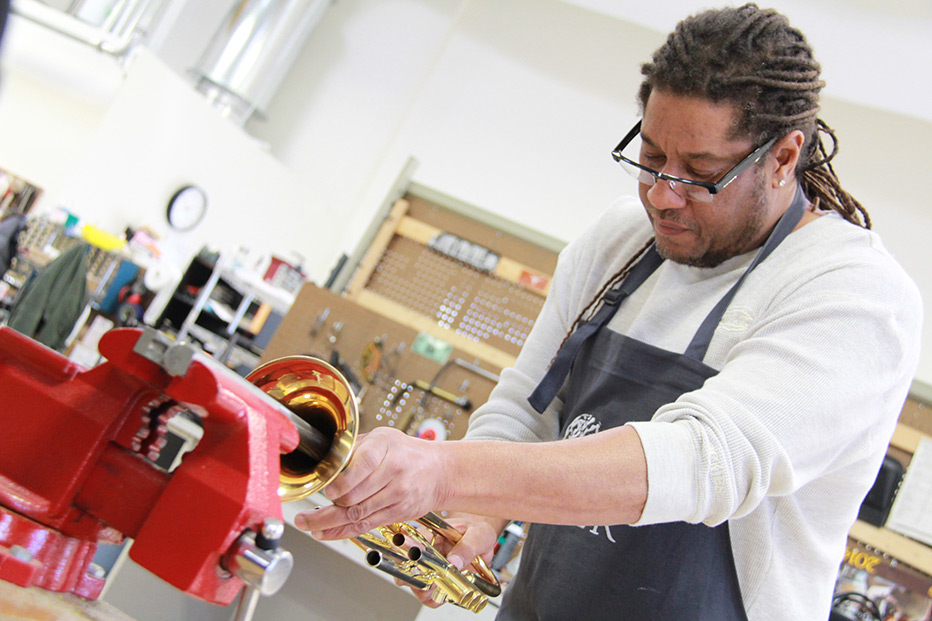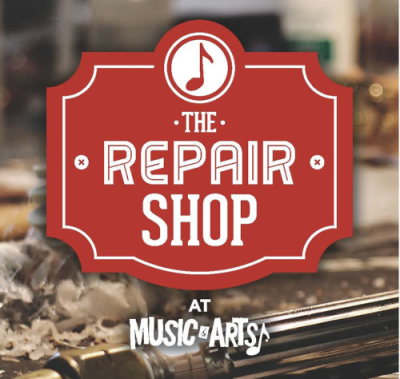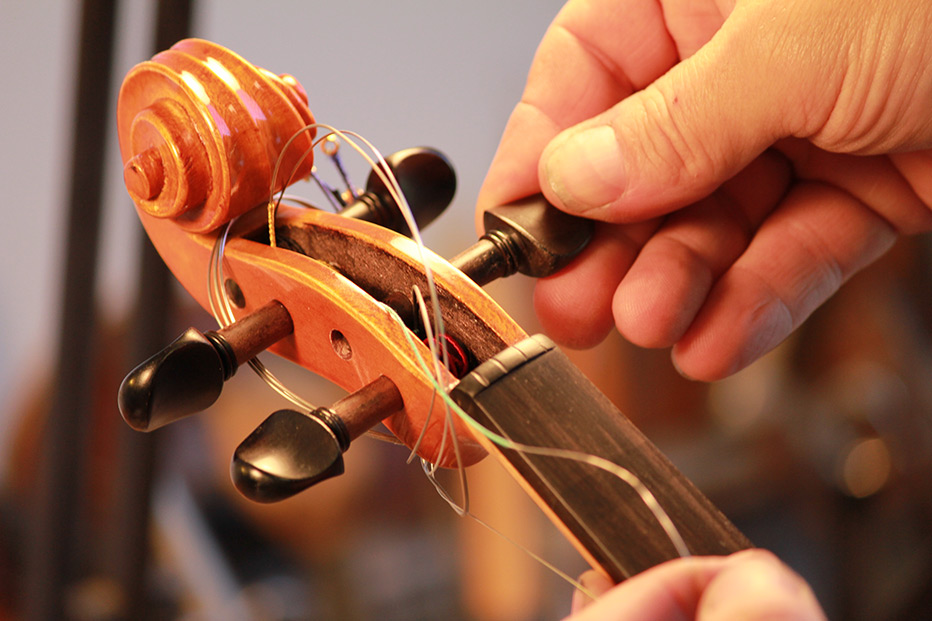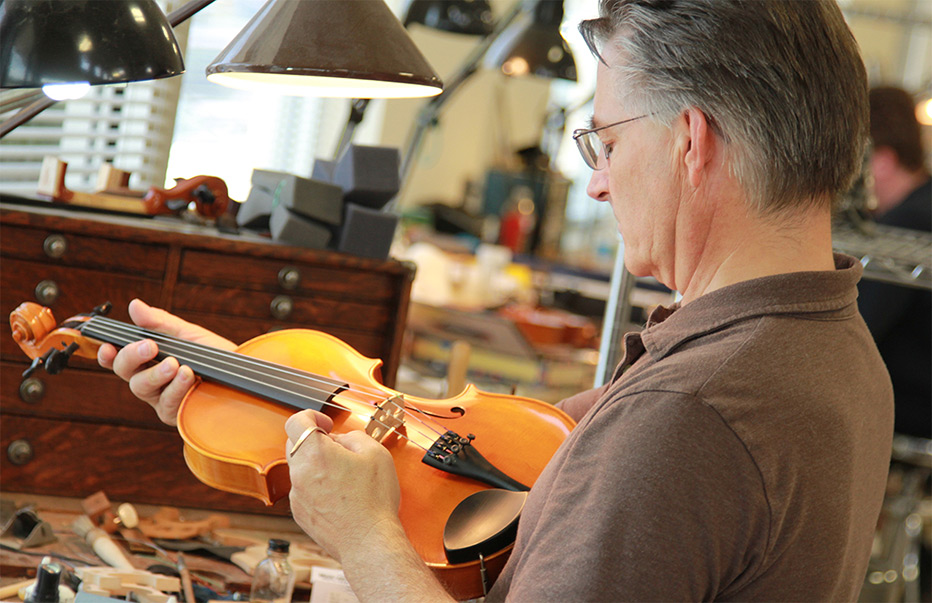April 09, 2015
String Instrument Care: A Guide
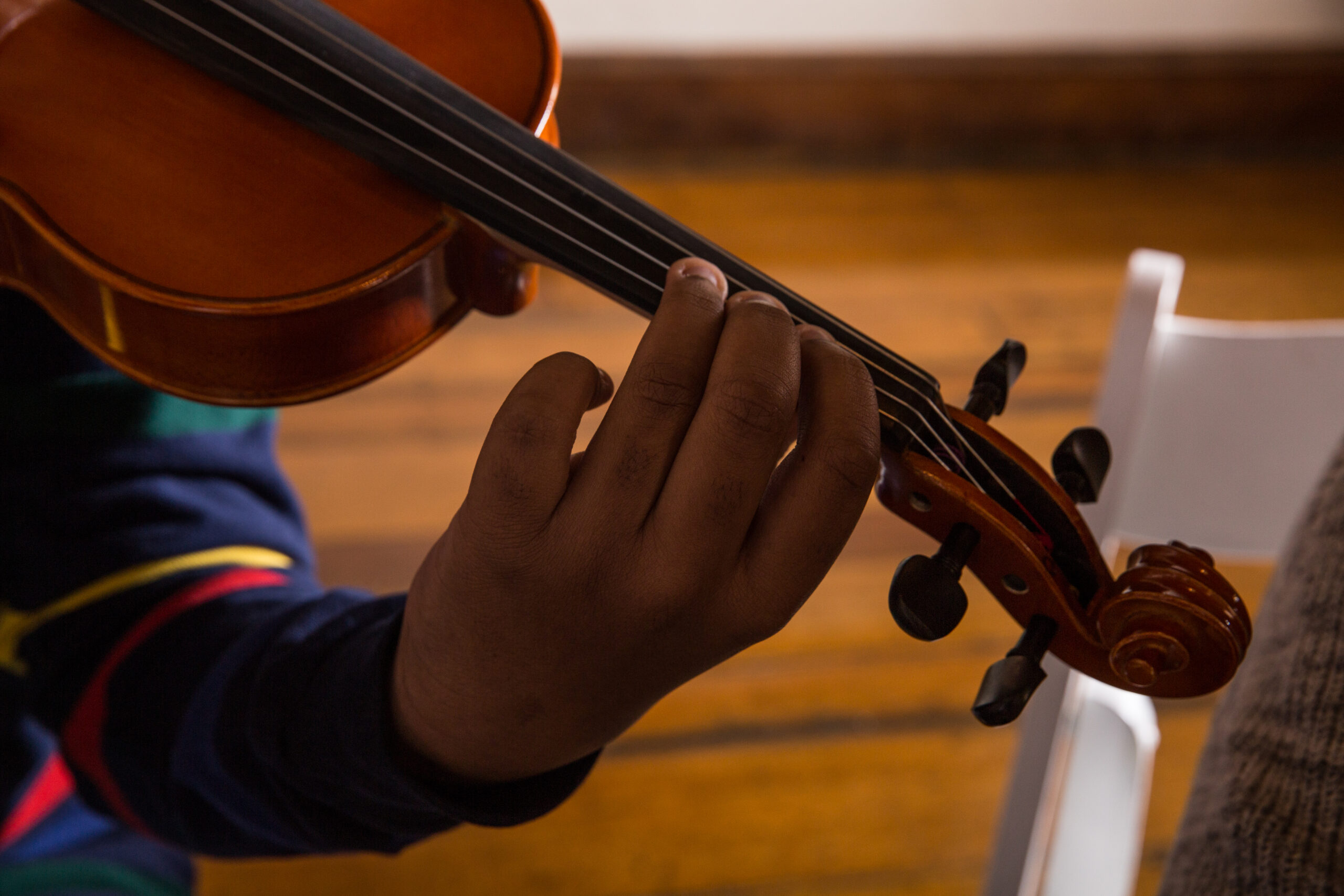

Whether you’re a student musician picking up your instrument for the first time or an accomplished artist who has been fine-tuning your talent for years, proper instrument care should always be on your mind. Ask yourself this: “What kind of musician would I be if my instrument wasn’t in perfect playing condition?” The answer is most likely not the best musician you could be. Violin, viola, cello or bass, string instrument care is the key to a long-lasting relationship with your stringed instrument.
Environmental Concerns
Temperature changes – Just like you, your stringed instrument is susceptible to temperature changes. A good way to judge where your instrument should and shouldn’t be played or stored is to think about where you would be most comfortable. Avoid areas that are excessively hot, cold, dry or humid.
Cold – While taking your instrument out in a snow storm (in its case of course) is perfectly fine, sudden temperature changes are not. Drastic temperature changes (hot to cold and vice versa) can make the wooden body of your instrument contract quickly, which may result in broken joints, seams and cracked wood. The likelihood of this happening can be reduced if your instrument is kept in a properly insulated case.
Heat – When left in direct sunlight for extended periods of time, the wood glue that holds your stringed instrument together can weaken and even melt. This can severely damage the joints and seams of your instrument. Avoid storing your instrument in the car on extremely hot days.
Dryness – Storing your instrument in a space that is extremely dry is never a good thing. Wood needs some moisture to keep its shape – without moisture, it will become brittle and can crack. If the air in your home is dry, invest in an instrument humidifier to protect your instrument from dryness.
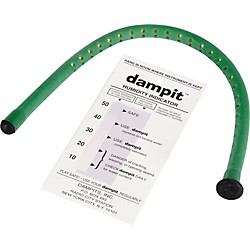

Dampness -Your instrument should never be exposed to excessive humidity. Too much moisture will cause the wood of your instrument, including the neck, to warp and become uneven. The glue that holds it together may also be affected, resulting in the breakdown of joints and seams.
Tips for Keeping your Instrument Performance Ready
- After each practice or performance, remove any excess rosin or hand oils from your instrument with a soft (microfiber) cloth. Storing 1 or 2 cleaning cloths in your case is always a good idea. Keep in mind that the longer rosin sits on the surface of your instrument, the harder it is to get off.
- Wipe down your strings. This will lengthen their lifespan and also help keep your fingerboard clean and rosin free.
- Before you play, take a close look at the bridge of your instrument. When a stringed instrument is being tuned, its strings may pull the top of the bridge towards the fingerboard – which if pulled too far, may result in the bridge falling over. This can break the bridge, crack the top of your instrument or even cause the sound post inside to collapse. When positioned properly, the bridge should be parallel with the bottom edge of the fingerboard. The feet of the bridge should sit evenly on the top of the instrument. Until you’ve learned how to make adjustments to the bridge on your own, your best bet is to enlist the help of a professional if moving your bridge is necessary.
- Speaking of learning how to do things on your own, it’s recommended that you don’t attempt to tune your stringed instrument unless you’ve been properly shown how. Lack of tuning experience often leads to broken strings which can easily be avoided with the proper tutelage.
- Get a feel for your tuning pegs. They should turn toward the pegbox with minimum pressure. Extremely dry conditions may result in peg shrinkage and humid conditions can cause swelling and sticking. If you think there is an issue with your tuning pegs, talk to your music teacher or retailer – they will be able to tell you whether or not the pegs should be replaced.
- If you ever hear a rattling or knocking sound inside the body of your instrument, stop playing immediately. The cause is most likely a fallen sound post that needs to be reset. Contact your retailer or local repair shop to have this done.
Before you play
- Make sure your hands are clean.
- Ensure your practice/performance space is clutter free.
- Tighten your bow strings.
- Rosin your bow.
- Properly tune your instrument.
After you play
- Open your case and make sure there is nothing unnecessary in it.
- Remove your shoulder rest (if you’re playing the violin or viola) and place it in your case.
- Loosen bow strings and secure bow in case.
- Gently wipe down your instrument with a soft cloth.
- Carefully clean the strings.
- Secure your instrument in its case.
- Put away accessories/sheet music.
- Store your instrument in a safe, temperature-sensitive space


Keeping a checklist like this on hand is a fantastic way for beginner musicians to get into a proper care routine.
Do’s and Don’ts
- Always check your stringed instrument before playing and if you see anything wrong, let someone know: your music teacher, a repair shop, or seek the opinion of a professional musician. Never play an instrument that is damaged or needs repair.
- Always clean your instrument thoroughly. Never put it away dirty. Also, avoid putting stickers, tape or labels on your instrument or bow – they both have soft finishes that affect their sound.
- Always put your instrument away properly and safely. Never store your violin in the car or in direct sunlight – make sure it’s always secure in its case when not in use.
- Always treat your instrument with respect. It is an extension of your talent and should always be handled with care.
Help protect your stringed instrument with a case. Check out our tips for Choosing the Best Violin Case.




